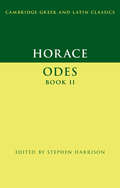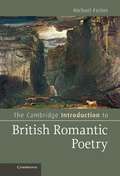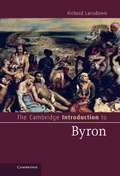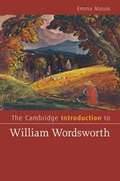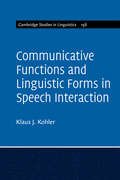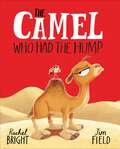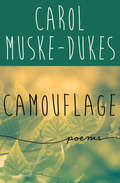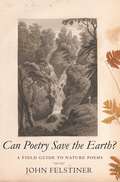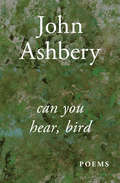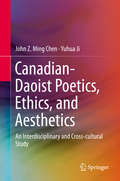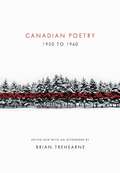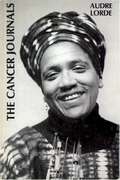- Table View
- List View
The Cambridge Companion to Wordsworth
by Stephen GillSpecially commissioned essays cover the important aspects of Wordsworth's life and work. The volume examines his poetic achievement with chapters on poetic craft, the origin of his poetry and the challenges it presents. The book offers students informative supplementary material on Wordsworth's life and critical reception.
Cambridge Companions to Literature: The Cambridge Companion to William Carlos Williams
by Christopher MacgowanThis Companion contains thirteen new essays from leading international experts on William Carlos Williams, covering his major poetry and prose works - including Paterson, In the American Grain, and the Stecher trilogy. It addresses central issues of recent Williams scholarship and discusses a wide variety of topics: Williams and the visual arts, Williams and medicine, Williams's version of local modernism, Williams and gender, Williams and multiculturalism, and more. Authors examine Williams's relationships with figures such as Ezra Pound, Wallace Stevens, and H. D. and Marianne Moore, and illustrate the importance of his legacy for Allen Ginsberg, Amiri Baraka, Robert Creeley, Robert Lowell, and numerous contemporary poets. Featuring a chronology and an up-to-date bibliography of the writer, The Cambridge Companion to William Carlos Williams is an invaluable guide for students of this influential literary figure.
Cambridge Greek and Latin Classics: Horace (Cambridge Greek and Latin Classics)
by Stephen HarrisonHorace's Odes remain among the most widely read works of classical literature. This volume constitutes the first substantial commentary for a generation on this book, and presents Horace's poems for a new cohort of modern students and scholars. The introduction focusses on the particular features of this poetic book and its place in Horace's poetic career and in the literary environment of its particular time in the 20s BCE. The text and commentary both look back to the long and distinguished tradition of Horatian scholarship and incorporate the many advances of recent research and thinking about Latin literature. The volume proposes some new solutions to established problems of text and interpretation, and in general improves modern understanding of a widely read ancient text which has a firm place in college and university courses as well as in classical research.
The Cambridge History of American Poetry
by Alfred Bendixen Stephen BurtThe Cambridge History of American Poetry offers a comprehensive exploration of the development of American poetic traditions from their beginnings until the end of the twentieth century. Bringing together the insights of fifty distinguished scholars, this literary history emphasizes the complex roles that poetry has played in American cultural and intellectual life, detailing the variety of ways in which both public and private forms of poetry have met the needs of different communities at different times. The Cambridge History of American Poetry recognizes the existence of multiple traditions and a dramatically fluid canon, providing current perspectives on both major authors and a number of representative figures whose work embodies the diversity of America's democratic traditions.
The Cambridge Introduction to British Romantic Poetry
by Michael FerberThe best way to learn about Romantic poetry is to plunge in and read a few Romantic poems. This book guides the new reader through this experience, focusing on canonical authors – Wordsworth, Coleridge, Byron, Keats, Blake and Shelley – whilst also including less familiar figures as well. Each chapter explains the history and development of a genre or sets out an important context for the poetry, with a wealth of practical examples. Michael Ferber emphasizes connections between poets as they responded to each other and to great literary, social and historical changes around them. A unique appendix resolves most difficulties new readers of works from this period might face: unfamiliar words, unusual word order, the subjunctive mood and meter. This enjoyable and stimulating book is an ideal introduction to some of the most powerful and pleasing poems in the English language, written in one of the greatest periods in English poetry.
The Cambridge Introduction to Byron
by Richard LansdownAuthor of the most influential long poem of its era (Childe Harold's Pilgrimage) and the funniest long poem in European literature (Don Juan), Lord Byron was also the literary superstar of Romanticism, whose effect on nineteenth-century writers, artists, musicians and politicians – but also everyday readers – was second to none. His poems seduced and scandalized readers, and his life and legend were correspondingly magnetic, given added force by his early death in the Greek War of Independence. This introduction compresses his extraordinary life to manageable proportions and gives readers a firm set of contexts in the politics, warfare, and Romantic ideology of Byron's era. It offers a guide to the main themes in his wide-ranging oeuvre, from the early poems that made him famous (and infamous) overnight, to his narrative tales, dramas and the comic epic left incomplete at his death.
The Cambridge Introduction to Milton
by Stephen B. DobranskiJohn Milton is one of the most important and influential writers in English literary history. The goal of this book is to make Milton's works more accessible and enjoyable by providing a comprehensive overview of the author's life, times and writings. It describes essential details from Milton's biography, explains some of the cultural and historical contexts in which he wrote, offers fresh analyses of his major pamphlets and poems - including Lycidas, Areopagitica and Paradise Lost - and describes in depth traditional and recent responses to his reputation and writings. Separate sections focus on important concepts or key passages from his major works to illustrate how readers can interpret - and get excited about - Milton's writings. This detailed and engaging introduction to Milton will help readers not only better understand the author's life and works but also better appreciate why Milton matters.
The Cambridge Introduction to Modernist Poetry
by Peter HowarthModernist poems are some of the twentieth-century's major cultural achievements, but they are also hard work to read. This wide-ranging introduction takes readers through modernism's most famous poems and some of its forgotten highlights to show why modernists thought difficulty and disorientation essential for poetry in the modern world. In-depth chapters on Pound, Eliot, Yeats and the American modernists outline how formal experiments take on the new world of mass media, democracies, total war and changing religious belief. Chapters on the avant-gardes and later modernism examine how their styles shift as they try to re-make the community of readers. Howarth explains in a clear and enjoyable way how to approach the forms, politics and cultural strategies of modernist poetry in English.
The Cambridge Introduction to Spanish Poetry
by D. WaltersThe Cambridge Introduction to Spanish Poetry comprises an extended survey of poetry written in Spanish from the Middle Ages to the present day, including both Iberian and Latin American writing. This volume offers a non-chronological approach to the subject in order to highlight the continuity and persistence of genres and forms (epic, ballad, sonnet) and of themes and motifs (love, religious and moral poetry, satirical and pure poetry). It also supplies a thorough examination of the various interactions between author, text and reader. Containing abundant quotation, it gives a refreshing introduction to an impressive and varied body of poetry from two continents, and is an accessible and wide-ranging reference-work, designed specifically for use on undergraduate and taught graduate courses. The most comprehensive work of its kind available, it will be an invaluable resource for students and teachers alike.
The Cambridge Introduction to Victorian Poetry
by Linda K. HughesVictorian poetry was read and enjoyed by a much larger audience than is sometimes thought. Publication in widely-circulating periodicals, reprinting in book reviews, and excerpting in novels and essays ensured that major poets such as Tennyson, Browning, Hardy and Rossetti were household names, and they remain popular today. The Cambridge Introduction to Victorian Poetry provides an accessible overview of British poetry from 1830 to 1901, paying particular attention to its role in mass media print culture. Designed to interest both students and scholars, the book traces lively dialogues between poets and explains poets' choices of form, style and language. It also demonstrates poetry's relevance to Victorian debates on science, social justice, religion, imperialism, and art. Featuring a glossary of literary terms, a guide to further reading, and two examples of close readings of Victorian poems, this introduction is the ideal starting-point for the study of verse in the nineteenth century.
The Cambridge Introduction to William Wordsworth
by Emma MasonWilliam Wordsworth is the most influential of the Romantic poets, and remains widely popular, even though his work is more complex and more engaged with the political, social and religious upheavals of his time than his reputation as a 'nature poet' might suggest. Outlining a series of contexts - biographical, historical and literary - as well as critical approaches to Wordsworth, this Introduction offers students ways to understand and enjoy Wordsworth's poetry and his role in the development of Romanticism in Britain. Emma Mason offers a completely up-to-date summary of criticism on Wordsworth from the Romantics to the present and an annotated guide to further reading. With definitions of technical terms and close readings of individual poems, Wordsworth's experiments with form are fully explained. This concise book is the ideal starting point for studying Lyrical Ballads, The Prelude, and the major poems as well as Wordsworth's lesser known writings.
Cambridge Introductions to Literature: The Cambridge Introduction to British Poetry, 1945–2010
by Eric FalciThe Cambridge Introduction to British Poetry, 1945–2010 provides a broad overview of an important body of poetry from England, Scotland, Wales, and Northern Ireland from the postwar period through to the twenty-first century. It offers a comprehensive view of the historical context surrounding the poetry and provides in-depth readings of many of the period's central poets. British poetry after 1945 has been given much less attention than both earlier British and American poetry, as well as postwar American poetry. There are very few single-author studies that present the entirety of the period's poetry. This book is unique for the comprehensive richness with which it presents the historical and literary-historical scene, as well as for its close-up focus on a wide range of major poets and poems.
Cambridge Studies in American Literature and Culture: The Poetry of Disturbance
by David BergmanIn The Poetry of Disturbance, David Bergman argues that post-war poetry underwent a significant if subtle shift in emphasis, moving from the modernist concern with the poem as a visual text to one that was chiefly oral in nature. The resulting change was disturbing, especially for those brought up on the principles of high modernism. This new stress on orality implied a shift in the economy of the poem, away from the austerity of language advocated by Pound and Eliot to a style that conveyed freedom, expansiveness, and an innovative directness.
Cambridge Studies in Linguistics: Communicative Functions and Linguistic Forms in Speech Interaction
by Kohler Klaus J.Prosody is generally studied at a separate linguistic level from syntax and semantics. It analyses phonetic properties of utterances such as pitch and prominence, and orders them into phonological categories such as pitch accent, boundary tone, and metrical grid. The goal is to define distinctive formal differentiators of meanings in utterances. But what these meanings are is either excluded or a secondary concern. This book takes the opposite approach, asking what are the basic categories of meaning that speakers want to transmit to listeners? And what formal means do they use to achieve it? It places linguistic form in functions of speech communication, and takes into account all the formal exponents - sounds, words, syntax, prosodies - for specific functional coding. Basic communicative functions such as 'questioning' may be universally assumed, but their coding by linguistic bundles varies between languages. A comparison of function-form systems in English, German and Mandarin Chinese shows this formal diversity for universal functions.
Cambridge Studies in Medieval Literature: The Evolution of Verse Structure in Old and Middle English Poetry
by Geoffrey RussomIn this fascinating study, Geoffrey Russom traces the evolution of the major English poetic traditions by reference to the evolution of the English language, and considers how verse forms are born, how they evolve, and why they die. Using a general theory of poetic form employing universal principles rooted in the human language faculty, Russom argues that certain kinds of poetry tend to arise spontaneously in languages with identifiable characteristics. Language changes may require modification of metrical rules and may eventually lead to extinction of a meter. Russom's theory is applied to explain the development of English meters from the earliest alliterative poems in Old and Middle English and the transition to iambic meter in the Modern English period. This thorough yet accessible study provides detailed analyses of form in key poems, including Beowulf and Sir Gawain and the Green Knight, and a glossary of technical terms.
Cambridge Studies in Nineteenth-Century Literature and Culture: Translation as Transformation in Victorian Poetry
by Annmarie DruryTranslation as Transformation in Victorian Poetry illuminates the dynamic mutual influences of poetic and translation cultures in Victorian Britain, drawing on new materials, archival and periodical, to reveal the range of thinking about translation in the era. The results are a new account of Victorian translation and fresh readings both of canonical poems (including those by Browning and Tennyson) and of non-canonical poems (including those by Michael Field). Revealing Victorian poets to be crucial agents of intercultural negotiation in an era of empire, Annmarie Drury shows why and how meter matters so much to them, and locates the origins of translation studies within Victorian conundrums. She explores what it means to 'sound Victorian' in twentieth-century poetic translation, using Swahili as a case study, and demonstrates how and why it makes sense to consider Victorian translation as world literature in action.
Cambridge Studies in Nineteenth-Century Literature and Culture: Gerard Manley Hopkins and the Poetry of Religious Experience (Cambridge Studies in Nineteenth-Century Literature and Culture #108)
by Martin DuboisThis nuanced yet accessible study is the first to examine the range of religious experience imagined in Hopkins's writing. By exploring the shifting way in which Hopkins imagines religious belief in individual history, Martin Dubois contests established views of his poetry as a unified project. Combining detailed close readings with extensive historical research, Dubois argues that the spiritual awareness manifest in Hopkins's poetry is varied and fluctuating, and that this is less a failure of his intellectual system than a sign of the experiential character of much of his poetry's thought. Individual chapters focus on biblical language and prayer, as well as on the spiritual ideal seen in the figures of the soldier and the martyr, and on Hopkins's ideas of death, judgement, heaven and hell. Offering fresh interpretations of the major poems, this volume reveals a more diverse and exploratory poet than has been recognised.
The Camel Who Had The Hump
by Rachel BrightAn uplifting and empowering tale about finding new ways to navigate big feelings, from the bestselling creators of The Lion Inside. As a shimmering sun lit the desert at dawn,A clumping of camels awoke with a yawn."GOOD MORRRRNING!" sang one,"YOO-HOO! Rise and shine!""I will!" called another. "Today is DIVINNNNNNE!"But not everyone has woken up in a good mood: Cuthbert the camel is having a bit of a bad morning. He's hot, he's tired and he certainly WON'T be walking to the oasis today! There is ABSOLUTELY NOTHING that will get him out of his grump. Or is there? When Cuthbert makes a new friend, he discovers that even if things get off on the wrong hoof, we're all just one smile away from a happy rest-of-day. A laugh-out-loud tale of how choosing fun can turn a grumpy, humpy start into a happy ending. This spectacularly illustrated rhyming tale from the award-winning, bestselling creators of The Lion Inside and The Koala Who Could is the perfect read for anyone who's ever had The Hump.
Camouflage: Poems
by Carol Muske-Dukes&“Lies, wishes, fantasies—all the weaponry of compassionate imagination at war with society—deploy with delicious satire in [Muske-Dukes&’s] first book.&” —Library JournalA poet, novelist, critic, and essayist, Carol Muske-Dukes has established herself as one of the preeminent talents of modern American writing. Birth, loss, imprisonment, and renewal are among the subjects of Camouflage, her first published book of poems. These twenty-eight poems are a young writer&’s stream of consciousness set in formal verse. In &“Photographer,&” Muske-Dukes slides between light and dark. &“Salad Days: Nebraska, 1964,&” relives a plane ride over the state&’s rolling plains. And the tongue-in-cheek yet respectful &“Swansong&” evokes a childhood ballet class, taught by a faded prima ballerina. Each poem is a skin, a mask, a camouflage meant for survival—a place of regeneration and change.
Campesinas
by José María Gabriel y GalánJosé María Gabriel y Galán es el poeta del pueblo sencillo y campesino. Retrata en su poesía las formas de vida de esas gentes paupérrimas del medio rural de esa región extremeña que fue conocida a principios del siglo XX por su extremada pobreza. Es muy difícil hacer bellas poesías de esas situaciones de extrema pobreza y de hambre endémica, y sin embargo el ojo de atento observador de este gran poeta, supo dictar a su mano los más profundos versos que pueda inspirar la más humilde gente. En su tiempo, la poesía de Gabriel y Galán fue muy denostada por esos eruditos de las letras cultas que sólo encuentran calidad poética cuando se canta a lo acomodado, a lo opulento, a lo fatuo y a lo superfluo; y a todo ello se le dota de un lenguaje críptico, y sofisticado. Es una poesía que verso a verso, retrata a las gentes campesinas de Castilla y de Extremadura, y que desprende efluvios de la profunda y sencilla poesía construida con el lado bueno del corazón.
Can Poetry Save the Earth? A Field Guide to Nature Poems
by John FelstinerPoems vivifying nature have gripped people for centuries. From Biblical times to the present day, poetry has continuously drawn us to the natural world. In this thought-provoking book, John Felstiner explores the rich legacy of poems that take nature as their subject, and he demonstrates their force and beauty. In our own time of environmental crises, he contends, poetry has a unique capacity to restore our attention to our environment in its imperiled state. And, as we take heed, we may well become better stewards of the earth. In forty brief and lucid chapters, Felstiner presents those voices that have most strongly spoken to and for the natural world. Poets--from the Romantics through Whitman and Dickinson to Elizabeth Bishop and Gary Snyder--have helped us envision such details as ocean winds eroding and rebuilding dunes in the same breath, wild deer freezing in our presence, and a person carving initials on a still-living stranded whale.
Can You Hear, Bird: Poems (Poesía/cátedra Ser.)
by John AshberyA 1995 collection of poems that finds John Ashbery at his most conversational, funny, and surprisingIn Can You Hear, Bird, John Ashbery&’s seventeenth collection, language is both a plaything and a sandbox. The poems are arranged not in the order of their composition but alphabetically, by the first letter in their titles, like the neatly arrayed keys of some fabulous Seussical instrument. In line after line, Ashbery demonstrates his alertness to language as it is spoken, heard, broadcast, and dreamed—and sets himself the task of rewriting, redefining, and revising the American idiom we think we know so well. Can You Hear, Bird is a decisive example of the uniquely Ashberyan sensibility his many fans love, revealing a generous and acute chronicler of the everyday bizarre, an observant and humane humorist, and an ear trained on decoding our modern world&’s beguiling polyphony.
Canadian-Daoist Poetics, Ethics, and Aesthetics: An Interdisciplinary and Cross-cultural Study
by John Z. Ming Chen Yuhua JiThis monograph takes an interdisciplinary and cross-cultural approach to 20th and 21st -century Canadian Daoist poetry, fiction and criticism in comparative, innovative and engaging ways. Of particular interest are the authors' refreshing insights into such holistic and topical issues as the globalization of concepts of the Dao, the Yin/Yang, the Heaven-Earth-Humanity triad, the Four Greats, Five Phases, Non-action and so on, as expressed in Canadian literature and criticism - which produces Canadian-constructed Daoist poetics, ethics and aesthetics. Readers will come to understand and appreciate the social and ecological significance of, formal innovations, moral sensitivity, aesthetic principles and ideological complexity in Canadian-Daoist works.
Canadian Poetry 1920 to 1960 (New Canadian Library)
by Brian TrehearneThe best in four decades of exceptional Canadian poetry, now in a limited hardcover edition.The poets in this anthology, all of whom matured creatively between 1920 and 1960, considered it one of their primary obligations to modernize Canadian writing, to bring the country's poetry out of late Romantic stasis after the Great War into a fertile and combative response to the cultural, political, technological, philosophical, religious, and economic conditions of the modern era. In their common reaction against Romanticism, and in their commitments to modern poetry's possibilities of profound newness, the poets in this volume make up one great movement in Canada's cultural history. The anthology includes:* 250 poems by 44 poets* Regionally diverse voices from Newfoundland, the Maritimes, Quebec, Ontario, the Prairies, and B.C.* Extensive selections of the work of major poets* An afterword and biographical headnotes provide important historical and literary contextThe poets included in Canadian Poetry from 1920 to 1960 are:Frank Oliver Call; Louise Morey Bowman; Raymond Knister; Joe Wallace; E.J. Pratt; W.W. E. Ross; F.R. Scott; A.J.M. Smith; Charles Bruce; Earle Birney; A.M. Klein; Dorothy Livesay; Leo Kennedy; Audrey Alexandra Brown; Kenneth Leslie; Robert Finch; Floris Clark McLaren; L.A. Mackay; Anne Marriott; Bertram Warr; Patrick Anderson; P.K. Page; Kay Smith; Miriam Waddington; Margaret Avison; A.G. Bailey; Louis Dudek; John Glassco; Ralph Gustafson; Raymond Souster; Irving Layton; Roy Daniells; Douglas LePan; George Whalley; James Reaney; Elizabeth Brewster; George Johnston; Goodridge MacDonald; Jay MacPherson; Anne Wilkinson; Phyllis Webb; Wilfred Watson; R.A.D. Ford; Eldon Grier.From the Hardcover edition.

